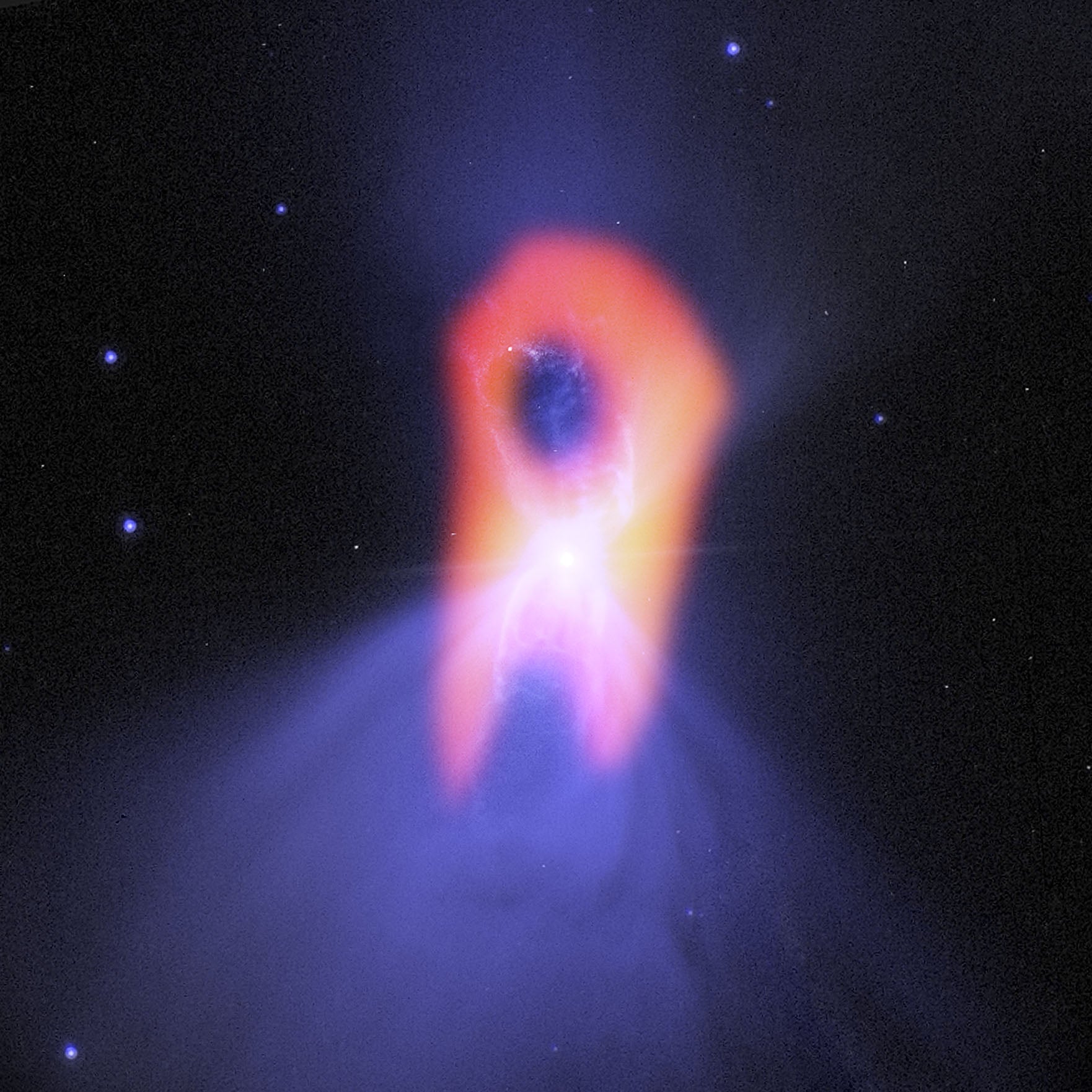
The Boomerang Nebula is one of the most puzzling bipolar reflection nebulae known. It lies 5,000 light-years distant in Centaurus, just 3⅓° north-northeast of Gacrux (Gamma [γ] Crucis) in the Southern Cross.
The Boomerang looks similar to other objects of its kind, displaying two nearly symmetrical wings of dust and gas that span only 1′ of sky (or about 1.5 light-years at its distance of 5,000 light-years). But unlike others of its kind, the Boomerang’s central star is ejecting jets of matter from its poles at a rate that’s up to 100 times greater than normal (or 10 billion times faster than our Sun at present). What’s more, the nebula’s deep interior has a temperature of only 1 degree Celsius above absolute zero (nearly minus 460 degrees Fahrenheit), making it one of the coldest known natural environments in the universe.
We are likely seeing a rapidly dying red giant star transitioning into a planetary nebula. The star has swelled to consume a smaller companion star that eventually merged with its core, causing a violent and rapid ejection of material that is expanding so fast it has rapidly cooled, becoming a cosmic freezer.
Despite the seemingly dire description, the nebula is surprisingly bright. It was so apparent in my 8-inch telescope that I immediately set up my 3-inch Tele Vue refractor and was able to see it, especially at moderate to high magnifications. The nebula appears similar to the Double Bubble Nebula (NGC 2371/2) in Gemini.









